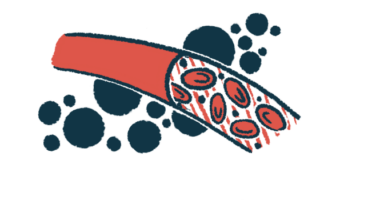High Chitotriosidase Levels Linked to Ankylosing Spondylitis Activity

High levels of the protein chitotriosidase in the blood are associated with more disease activity in ankylosing spondylitis patients. This protein might be a useful prognostic marker.
The study, “Serum chitotriosidase and neopterin levels in patients with ankylosing spondylitis,” was published in Therapeutic Advances in Musculoskeletal Disease.
Chitotriosidase is a kind of chitinase — a protein that breaks down chitin, the main component of insects’ exoskeletons and the cell walls of fungi. Macrophages, a kind of immune cell, make a lot of chitotriosidase when activated, and high levels of this protein have been linked to diseases including Alzheimer’s, multiple sclerosis and juvenile idiopathic arthritis.
To understand whether chitotriosidase might also play a role in ankylosing spondylitis, a team of Turkish researchers recruited 86 patients with ankylosing spondylitis and divided them into two groups based on their Bath Ankylosing Spondylitis Disease Activity Index (BASDAI) scores: those with higher scores were the active disease group (40 patients); those with low scores were the inactive disease group (46 patients). The groups were similar in terms of age, sex, and history of medication.
The researchers took blood samples from patients and measured levels of chitotriosidase, as well as neopterin, another protein made by macrophages that has been associated with inflammatory diseases such as rheumatoid arthritis and inflammatory bowel disease. They also measured levels of common markers of inflammation, including C-reactive protein.
Patients in the active disease group had higher average levels of chitotriosidase, neopterin, and inflammatory markers than those in the inactive disease group.
Furthermore, chitotriosidase levels were significantly correlated with patients’ BASDAI scores and levels of inflammatory markers, suggesting that chitotriosidase levels are indicative of disease progression and might be useful as a prognostic marker.
Neopterin, on the other hand, was not associated with BASDAI scores or levels of other inflammatory markers.
Nonetheless, the study was not without limitations. Because the effects of the type of therapy on neopterin and chitotriosidase levels were not followed, their use as a marker to assess therapy efficacy could not be measured. Also, there was a lack of a healthy control group.
“[Serum chitotriosidase] levels can be useful in the determination of disease activity in patients with ankylosing spondylitis,” the researcher said.
Further studies may shed additional light on the role of this protein in the disease and how this information might be best used to guide treatment.






